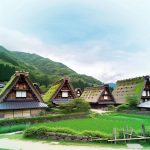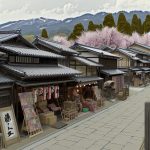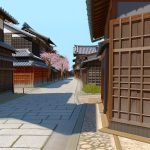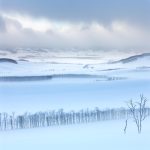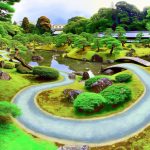Introduction to Okinawa’s Beaches
Okinawa, an archipelago situated to the south of mainland Japan, offers a mesmerizing combination of sun, sand, and sea. Known worldwide for its immaculate beaches and crystalline, turquoise waters, Okinawa is a hub for beach lovers eager to explore a variety of coastal activities throughout the year. The archipelago’s subtropical climate provides an idyllic setting, ensuring that its shores are a haven for travelers seeking a blend of relaxation and adventure.
Popular Beaches in Okinawa
Among Okinawa’s beaches, several stand out, each with unique attributes that cater to diverse interests. Emerald Beach, nestled within the Ocean Expo Park on the Motobu Peninsula, is particularly famous for its distinct crescent shape. It is thoughtfully divided into various sections, such as designated areas for swimming, recreation, and viewing, allowing visitors to select an experience that suits their preferences. This well-planned layout is perfect for families, couples, and solo travelers alike.
Then there’s Manza Beach in Onna Village. This beach is celebrated for its breathtaking vistas of the Okinawan coastline, making it a choice spot for those who want to immerse themselves in natural beauty while enjoying a multitude of water sports. Snorkeling, with its opportunities to explore vibrant underwater ecologies, and jet skiing, which offers high-speed thrills over the water’s surface, are just a couple of activities available here. Meanwhile, Furuzamami Beach located on Zamami Island, presents a quieter alternative for those wishing to escape the bustle of more crowded areas. Its serene environment is surrounded by crystal-clear waters that house a kaleidoscope of marine life, providing ample opportunities for peaceful contemplation or leisurely exploration.
Beach Activities
Okinawa’s beaches offer a plethora of activities, suitable for visitors of all age groups. The rich coral reefs that form ecosystems teeming with life are a particular draw, making snorkeling and scuba diving a must-try for those looking to witness the underwater wonder firsthand. Swimmers have a chance to see an incredible spectrum of colorful fish, graceful turtles drifting by, and myriad marine species going about their lives in the deep blue.
For those with an appetite for thrills, activities like parasailing allow for awe-inspiring views of the ocean from above, while jet skiing provides a high-octane experience skimming across the water. Meanwhile, eco-friendly pursuits such as kayaking and stand-up paddleboarding offer a more laid-back approach to exploring the coastline. These activities provide not just a physical workout, but an opportunity to connect with nature, feeling the gentle rhythm of the ocean as you glide along its surface.
Conservation and Safety
Preserving the natural beauty and ecological integrity of Okinawa is a shared responsibility for all visitors. Conservation efforts focus on maintaining the health of the coral reefs and broader marine environment. Beachgoers are encouraged to follow specific guidelines, which include avoiding physical contact with the delicate coral structures and ensuring proper disposal of litter to prevent marine pollution.
Safety remains a crucial aspect of enjoying Okinawa’s treasures. Beachgoers should stay informed about local weather patterns and heed any advisories issued by lifeguards. Adequate sun protection is paramount in the often-intense sun; wearing sunscreen and seeking shade periodically can help prevent sunburn. Additionally, staying hydrated is vital, especially during the hotter months, to counteract the effects of sun exposure while enjoying the outdoors.
Further Exploration
Planning a trip to Okinawa is made easier with resources designed to enhance your travel experience. The official Okinawa travel guide, accessible through Visit Okinawa, offers comprehensive information tailored to visitors. This includes insights into diverse accommodations, from luxury resorts to quaint guesthouses, ensuring every traveler’s need is met. Cultural experiences also abound, allowing travelers to immerse themselves in the island’s rich history and traditions.
In summary, Okinawa stands as a prime destination for those in search of beach-centric experiences, ranging from restful retreats to exhilarating adventurers. Its variety of beaches, coupled with plentiful activities and a commitment to conservation and safety, make it an inviting choice for both new and seasoned travelers. Whether you’re diving into its clear waters to explore vibrant marine life or simply basking under the sun with a book, Okinawa’s shores present an inviting invitation to relax and rediscover nature’s wonders.
For a more detailed guide to navigating Okinawa’s alluring coastal offerings, head to the official destination website via the link above, ensuring your trip is both memorable and aligned with your personal preferences.


